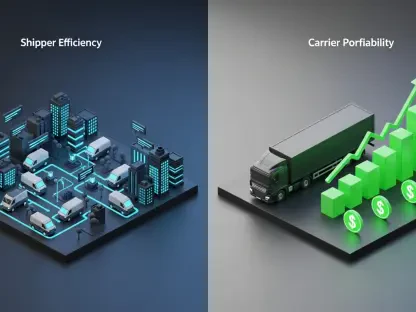Setting the Stage: A New Era of Investment Opportunities
In the rapidly evolving landscape of technology investments, a staggering trend has emerged: the most substantial wealth creation in artificial intelligence (AI) is no longer tied to the public debut of companies through Initial Public Offerings (IPOs). Instead, secondary markets for pre-IPO shares are becoming the epicenter of financial gains. With AI giants achieving valuations in the hundreds of billions while remaining private, the opportunity to capitalize on explosive growth is shifting dramatically. This market analysis examines the forces driving this pivot, the data behind the trend, and the implications for investors navigating this transformed terrain. The urgency to understand and act on these shifts cannot be overstated as trillion-dollar private companies loom on the horizon.
Decoding the Market Shift: Trends and Data Insights
Prolonged Private Phases Fuel Unprecedented Valuations
A defining characteristic of today’s tech sector, particularly in AI, is the extended period companies spend in private status before considering a public listing. Unlike the 1990s, when firms often went public within four years, many AI leaders now remain private for over a decade. This allows them to amass staggering valuations fueled by abundant private capital. For instance, certain AI frontrunners are projected to reach valuations exceeding $500 billion, with annualized revenues in the tens of billions, setting the stage for potential trillion-dollar milestones in the near term. This trend underscores a fundamental shift in where value is created, moving the window of opportunity well before any IPO.
Pre-IPO Growth as the Core of Wealth Creation
Delving deeper into valuation dynamics, the data reveals that the most significant growth occurs in the pre-IPO phase rather than post-listing. By the time a company goes public, much of the exponential upside has already been captured by early stakeholders. A notable example is an AI infrastructure firm that saw its stock triple after going public at a $23 billion valuation; however, pre-IPO investors reaped even larger multiples on their initial investments. This pattern highlights why secondary markets are increasingly attractive, though challenges such as illiquidity and limited access persist as barriers for many potential participants.
Emerging Platforms Democratize Access to High-Growth Investments
The accessibility of pre-IPO investments is undergoing a transformation, driven by innovative platforms that lower traditional barriers. Marketplaces are now enabling accredited investors to enter with minimum investments as low as $10,000, a sharp decline from the previous $100,000 thresholds. These platforms also enhance transparency by offering real-time data on bid-ask spreads and trading volumes for high-demand private companies. While this democratization expands opportunities, it also introduces risks for less experienced investors who may lack the resources to navigate the complexities of private markets compared to institutional giants with significant stakes in AI leaders.
Liquidity and Transparency Reshape Market Dynamics
Secondary markets are maturing with advancements in liquidity and price discovery, addressing long-standing pain points in private investments. Real-time pricing data and faster settlement times are creating a more fluid environment, reducing the perception of private shares as long-term lockups. However, regional variations in regulation and market maturity complicate global adoption. For example, while U.S.-based platforms lead in innovation, other regions face stricter rules that hinder investor participation. Despite these hurdles, the integration of data-driven tools is steadily mitigating uncertainties, signaling a robust evolution in how these markets operate.
Projections: The Future Trajectory of AI Wealth in Secondary Markets
Technological and Regulatory Catalysts on the Horizon
Looking ahead, several catalysts are poised to accelerate the prominence of secondary markets in AI wealth creation. Blockchain technology for secure transactions and AI-driven analytics for predictive pricing are enhancing market efficiency, making investments more reliable. Additionally, regulatory reforms, such as policies allowing retirement funds like 401(k) plans to allocate capital to private equity, could unlock trillions in potential investment. These developments suggest a future where secondary markets become the dominant avenue for high-growth opportunities, potentially surpassing traditional IPOs within the next few years.
Economic Implications of Trillion-Dollar Private Entities
The economic landscape is set to be reshaped by the emergence of trillion-dollar private companies, a milestone that could materialize within the next 12 to 24 months. This unprecedented scale of private valuation growth emphasizes the urgency for investors to engage with secondary markets now. As AI firms prioritize flexibility over public accountability, the trend of prolonged private status is expected to intensify, further concentrating wealth creation in pre-IPO phases. Market projections indicate that failing to adapt to this shift could mean missing out on peak growth cycles that redefine financial returns.
Global Adoption and Persistent Challenges
While the trajectory points toward broader adoption of secondary markets, challenges in global integration remain a critical consideration. Disparities in regulatory frameworks across regions create uneven access, with some markets lagging behind in infrastructure development. Moreover, the risk of wealth concentration persists if access remains skewed toward institutional players with deep capital reserves. Balancing democratization with risk management will be pivotal in ensuring that the benefits of this market shift are distributed more equitably, a factor that analysts are closely monitoring as the space evolves.
Reflecting on the Analysis: Strategic Pathways Forward
Looking back, this analysis illuminates how the pivot from IPOs to secondary markets redefines AI wealth creation, with extended private phases and massive pre-IPO valuations driving the most significant gains. The emergence of accessible platforms, coupled with technological and regulatory advancements, has reshaped the investment landscape in profound ways. For investors and businesses, the next steps involve exploring partnerships with credible marketplaces to secure early exposure to high-growth opportunities. Prioritizing due diligence on platform reliability and staying abreast of evolving regulations offers a strategic edge. As the market continues to mature, focusing on innovative tools for transparency and liquidity proves essential in navigating this dynamic and transformative space.









